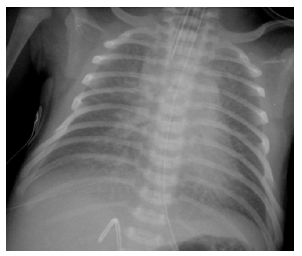Reversed Differential Cyanosis in Two Neonates with Obstructed Supracardiac Total Anomalous Pulmonary Venous Drainage by Pak-Cheong Chow* in Research in Pediatrics & Neonatology_ The Journal of Pediatrics

Abstract
We
reported two neonates with obstructed supracardiac total anomalous pulmonary
venous drainage (TAPVD) presented with reverse differential cyanosis. We reviewed
the pathophysiology of supracardiac
TAPVD in causing reverse differential cyanosis and highlighted the importance
of considering TAPVD as the differential diagnosis to facilitate early treatment
Introduction
Generalized
cyanosis in newborn can be caused by many pathological conditions and cyanotic
congenital heart disease represents one of the important causes. Differential
cyanosis refers to the situation where upper limb saturation is higher than
lower limb and it is well documented to be caused by persistent pulmonary hypertension in newborn (PPHN)
[1] or patients with patent ductus arteriosus and Eisenmenger syndrome in
adults [2-4]; Table 1. This has been also reported in a neonate with critical
aortic stenosis, hypoplastic aortic arch, pulmonary hypertension and PDA [2].
Reversed differential cyanosis (RDC) referred to the situation when the oxygen
saturation of upper limb is lower than that of lower limb, which was
classically reported in neonates with transposition of great arteries (TGA)
with pulmonary hypertension [2] or TGA with aortic arch obstruction or
interruption [5-12]; Table 1. Other causes included supracardiac total
anomalous pulmonary venous drainage (TAPVD) [13], isolated right subclavian
artery [14], and infants on veno-arterial extracorporeal membrane oxygenation
using right carotid artery for cannulation [15]. We herewith reported two cases
of obstructed supracardiac TPAVD manifested reversed differential cyanosis.
https://crimsonpublishers.com/gmr/fulltext/GMR.000573.php
Crimson
Publishers: https://crimsonpublishers.com/
For
more articles in The Journal of
Pediatrics,
Please
click on below link: https://crimsonpublishers.com/rpn/






